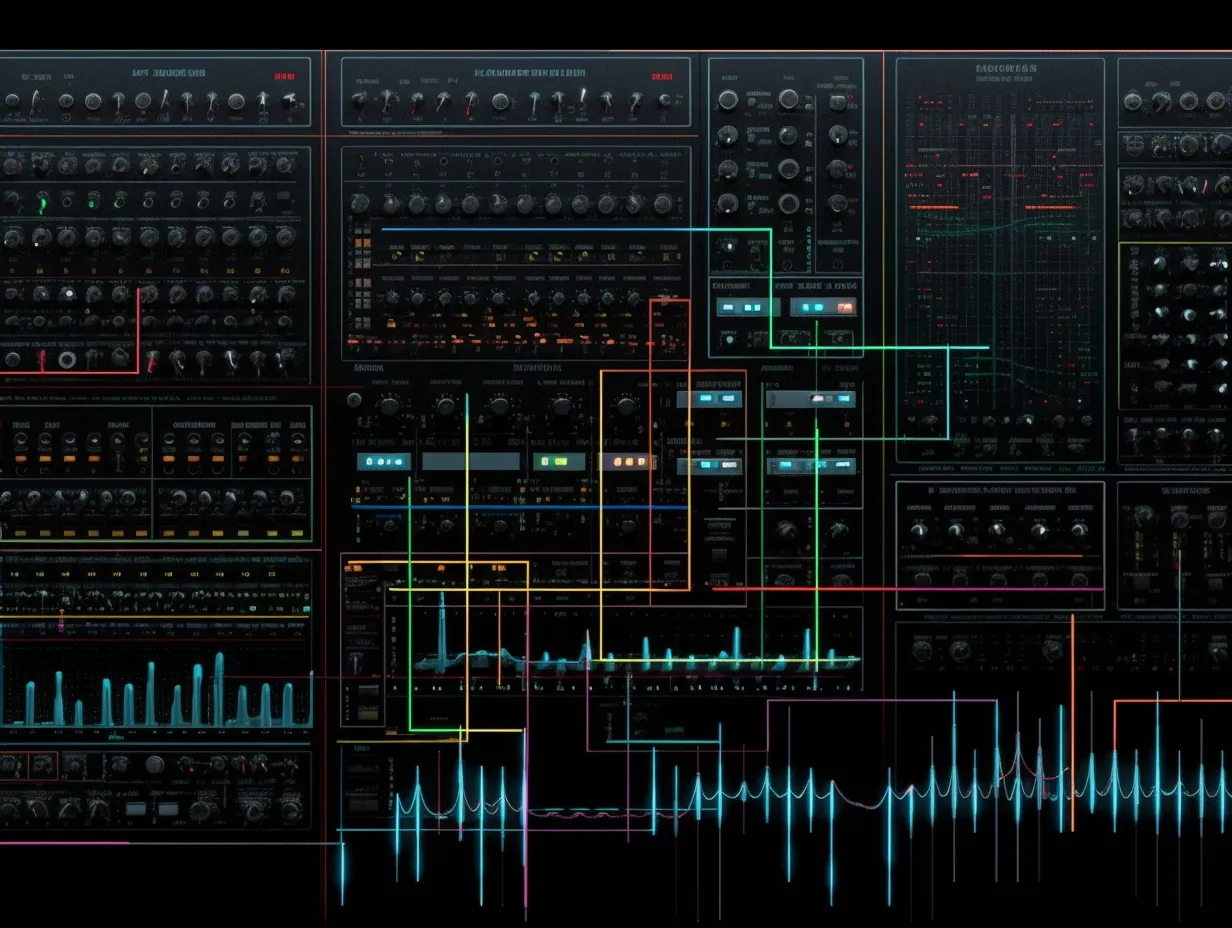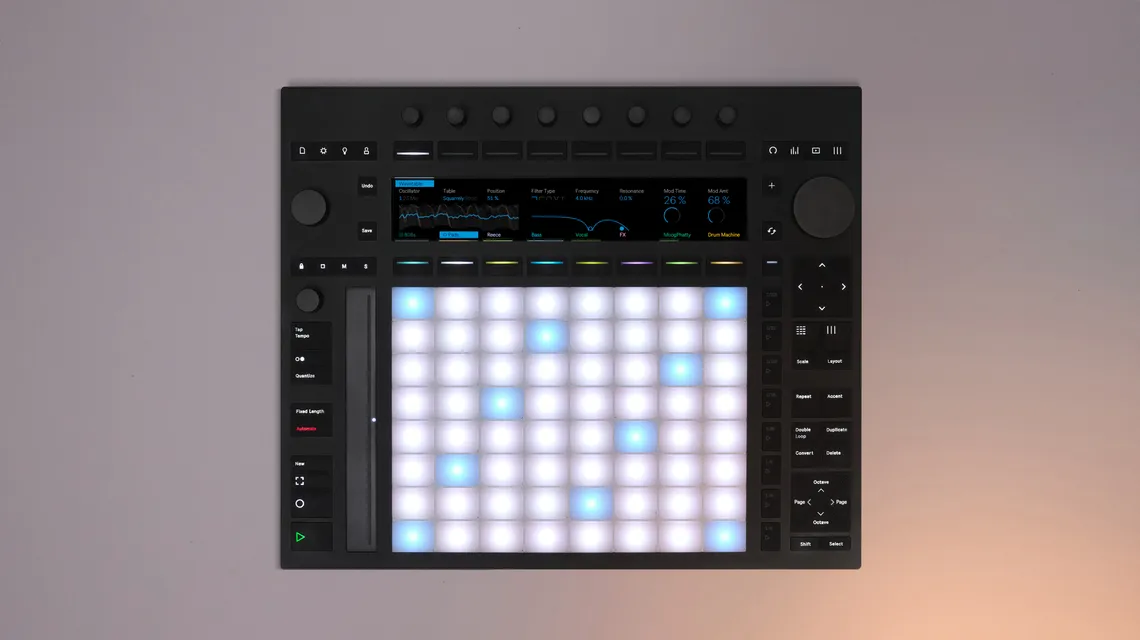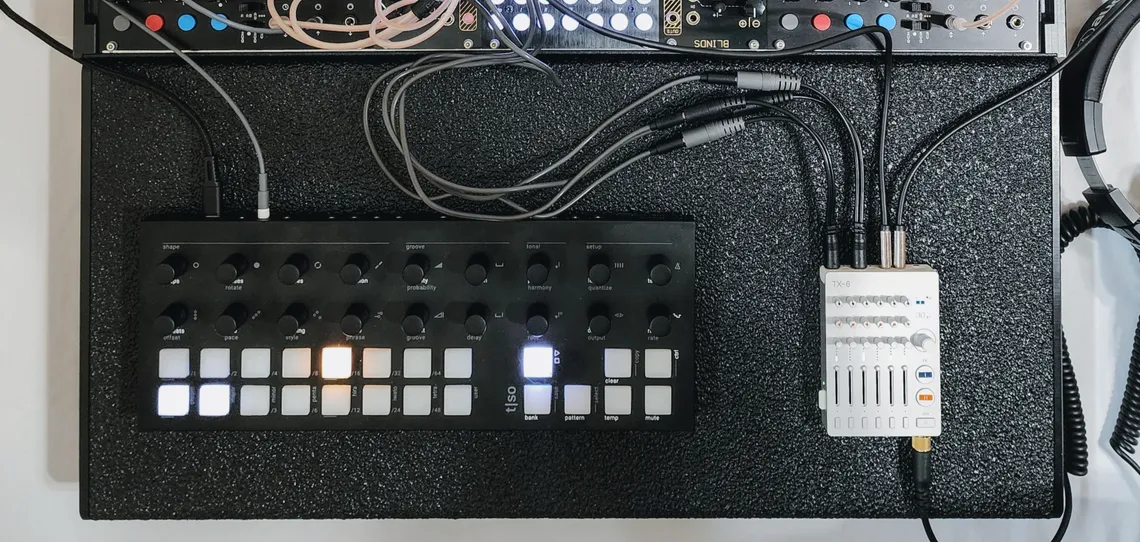Frequency Modulation (FM) Synthesis is a type of sound synthesis method that became popular in the early 1980s due to its rich, complex timbres and high degree of control. It involves using one or more frequencies to modulate another, resulting in a new, often complex, waveform. This article will dive into the core principles of FM synthesis, explaining how its components work together to create unique sounds.
Understanding the basics
The fundamental components of FM synthesis are the Carrier and the Modulator. At its simplest, the Carrier is the primary sound that you hear, while the Modulator changes or modulates the frequency of the Carrier. The degree to which the Modulator changes the Carrier's frequency is determined by the Modulation Index. The higher the Modulation Index, the more significant the frequency changes, resulting in a more complex and rich timbre.
To understand this better, imagine a radio station. The audio content (music or voice) is the Modulator, while the constant frequency you tune into on your radio is the Carrier. The audio content modulates the Carrier frequency, which is then demodulated by your radio to produce the sound you hear.
FM synthesis components
Carrier
In FM synthesis, the Carrier is the primary frequency or tone that is heard. It's called the Carrier because it "carries" the modulation applied by the Modulator. Without any modulation applied, the Carrier would produce a simple, pure tone, like a sine wave.
Modulator
The Modulator in FM synthesis is a frequency that is used to modulate the Carrier. The Modulator itself is not directly heard; instead, it influences the frequency and thus the timbre of the Carrier.
Modulation index and sidebands
The Modulation Index determines the amount of frequency deviation in the Carrier caused by the Modulator. A higher Modulation Index results in a broader frequency deviation and more complex waveforms.
When the Modulator frequency is applied to the Carrier, it creates additional frequencies known as sidebands. These sidebands are harmonically related to the Carrier and Modulator and contribute to the overall complexity and richness of the sound produced.
Operators in FM synthesis
In the context of FM synthesis, operators are individual units that generate and manipulate sound. Each operator can function as either a Carrier or a Modulator, and even both in certain circumstances. An operator typically consists of an oscillator, which generates a waveform, an amplifier, which controls the volume or amplitude of the waveform, and an envelope generator, which shapes the amplitude of the sound over time.
The ability to assign each operator to function as a Carrier or a Modulator provides an enormous range of possible sounds. As a Carrier, the operator's oscillator produces the fundamental waveform that we hear. As a Modulator, it influences the frequency of another operator's waveform, creating complex overtones and new timbres.
FM synthesis algorithms
An FM synthesis algorithm is a specific arrangement of operators in a synthesizer. The algorithm determines how the operators interact with each other, dictating which operators act as Carriers and which act as Modulators. The number of operators and the way they're interconnected varies from one algorithm to another, and this significantly impacts the range and complexity of sounds that can be produced.
In a simple algorithm, you might have one operator acting as a Carrier and one as a Modulator. In more complex algorithms, you can have multiple operators, with some acting as both Carriers and Modulators. This allows the output of one Modulator to be used as the input for another, or a Carrier to also modulate other Carriers, leading to a rich, dynamic range of sounds.
Consider an algorithm with four operators:
- Operator 1 is a Carrier.
- Operator 2 modulates Operator 1.
- Operator 3 is also a Carrier.
- Operator 4 modulates Operator 3.
In this algorithm, Operators 1 and 3 provide the fundamental sounds, while Operators 2 and 4 add complexity to those sounds. By varying the frequencies, waveforms, and Modulation Indices of each operator, you can create a wide variety of unique sounds.
Some FM synthesizers provide a set of predefined algorithms, while others allow you to create your own custom algorithms. The Yamaha DX7, a classic FM synthesizer, offers 32 different algorithms, each presenting a different arrangement of its six operators.
The interplay of operators and algorithms
Operators and algorithms in FM synthesis work together to create a vast palette of sounds. By altering the role, frequency, and Modulation Index of each operator within an algorithm, you have granular control over the resulting timbre. This flexible structure is what makes FM synthesis so powerful and versatile.
Envelopes in FM synthesis
In FM synthesis, envelopes are part of each operator. They can control not just the amplitude of the operator, but also the intensity of modulation. This allows the timbre of the sound to evolve over time, not just the volume.
Envelopes applied to the Carrier operators affect the overall volume contour of the sound, while envelopes applied to the Modulator operators affect how the timbre evolves over time. This is because changes in the amplitude of the Modulator change the Modulation Index, altering the harmonic content of the sound.
By adjusting these envelopes, you can create sounds that change in complex ways over time. For example, you might set a slow Attack on a Modulator to gradually introduce new harmonics, making the sound evolve from a simple tone to a complex one. Alternatively, a fast Decay on a Modulator could create a brief, complex "twang" at the start of a note before settling into a simpler sustained sound.
The power of envelopes
The ability to dynamically control both volume and timbre over time is one of the key strengths of FM synthesis. With the use of envelopes, FM synthesis can mimic the behavior of real-world instruments more convincingly or create entirely new sounds that change in intricate ways over time.
In essence, while the operators and algorithms of FM synthesis define the potential sound palette, the envelopes shape these sounds over time, creating the unique and evolving character that FM synthesis is known for. It's the interplay of these components that makes FM synthesis a powerful tool for sound design and music production.
Frequency ratios and harmonic content
In FM synthesis, the Carrier is the base frequency that we hear, and the Modulator is the frequency that modifies or modulates the Carrier. The ratio between the frequencies of the Modulator and the Carrier significantly influences the resulting sound.
When the ratio is an integer (like 1, 2, 3, etc.), the Modulator and the Carrier are harmonically related, meaning they align with the harmonic series. This results in harmonic or "musical" sounds, which can be used to emulate traditional instruments or create classic synthetic sounds. For example, a ratio of 2:1 means that the Modulator frequency is twice the frequency of the Carrier, which results in a sound with a clear harmonic structure.
When the ratio is a non-integer or fractional (like 1.5, 2.7, 3.2, etc.), the Modulator and the Carrier are not harmonically related, and the resulting sound will be inharmonic or "noisy." These types of sounds can be used for creating percussive sounds, bell-like tones, or other unique and complex timbres.
Modulation index and ratios
The Modulation Index, which controls the amount of frequency deviation in the Carrier, works in combination with the ratio to shape the sound's timbre. Even with a fixed ratio, by changing the Modulation Index, you can create different harmonic content. A higher Modulation Index introduces more sidebands or additional frequencies, leading to a brighter and more complex sound.
Practical application of ratios
By adjusting the ratio between the Carrier and the Modulator, you can sculpt the harmonic content of your sound in various ways. Here are a few practical examples:
Creating bass sounds
Using a ratio of 1:1 (Modulator:Carrier) can create a rich, but still fairly simple sound, suitable for bass patches.
Creating bell-like sounds
Using a non-integer ratio like 3.5:1 can result in a complex, metallic, or bell-like sound.
Emulating strings
A ratio like 2:1 can produce a sound with a clear harmonic structure, suitable for string or organ-like patches.
Next steps
After grasping the basics of FM synthesis, the next steps can vary depending on your interests and goals.
It's essential to practice hands-on with an FM synthesizer, applying your understanding of operators, algorithms, envelopes, and ratios. Many synthesizers, both hardware and software, come with preset sounds. Dissecting these presets can provide practical insights into how various sounds are constructed. Studying specific synthesizers, like the Yamaha DX7 or software like Native Instruments' FM8 or Ableton's Operator, can deepen your understanding of FM synthesis through different workflows and features.
You might also delve into more advanced FM synthesis techniques, like feedback or Phase Modulation. Enhancing your sound design techniques and principles is beneficial, understanding how to recreate specific sounds, and learning about music theory and composition can also complement your synthesis skills, especially when designing sounds for a musical context.
Finally, exploring the fields of acoustics and psychoacoustics, which study the behavior of sound in the physical world and our perception of it, can enrich your sound design choices. Remember, learning synthesis is a journey that requires time and practice. How is your journey into FM synthesis going? Let us know in the comments below.





